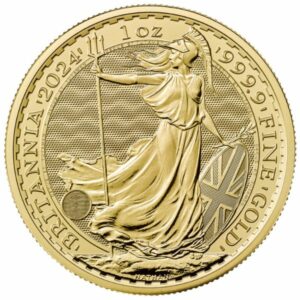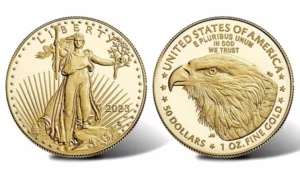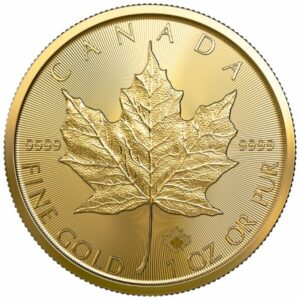How to Weigh Gold: A Guide to Gold Measurement Systems

Measuring gold can be tricky. Gold’s spot price is always stated in troy ounces, a form of measurement we rarely see used outside of the precious metals industry. But gold products are also sometimes listed in more standard measurements. You’ll find gram, kilo, and even pound units used to describe the weight of some gold coins and bars.
This can be confusing, especially for new gold bullion investors. In order to figure out whether you’re getting a good deal on gold or silver, you’ll need to be able to reliably convert your investments into troy ounces. And to understand these complex conversions, you’ll need a bit of background information on gold measurement systems.
To research this article, we dove into the history of gold bullion. It’s taken thousands of years for traders to develop the complicated, highly sophisticated systems of measurement we now use to weigh and exchange gold products. Our guide will teach readers everything they need to know about how to weigh gold using modern gold measurement systems.
History of Gold Measurement Systems
Gold has been traded and held for thousands of years. The Ancient Egyptians frequently made jewelry and artwork using both gold and silver. But until relatively recently, expecting a standardized weighing system from Ancient gold investors would have been like asking a Kindergartener to explain calculus.
The modern concept of standard gold measurement systems begins with the English in around the 15th century. Let’s take a look at one of the first and most important gold measurement systems, the troy ounce.
Where did the Troy Ounce Come From?
The term “troy ounce” was first used en masse during the 15th century in Great Britain. Traders most applied the measurement system to the precious metal system. As we’ll talk about later in this guide, the troy ounce isn’t the only troy measurement of weight used in modern gold measurement systems.
The grain, pennyweight, troy ounce, and troy pound were all used to measure gold bullion. While the pennyweight has fallen out of favor with modern traders, these other gold measurement systems comprise much of how we weigh and classify gold bars and coins today.
If you’re a history buff, it’s worth taking a look at the origins of the measurement unit. The term troy ounce is relatively modern, having been first used in 1390. But the unit it represents is much older. Some historians argue that the French market in Troyes serves as the origin point for the common modern gold measurement system. Traders in this popular market needed to invent a standard measurement to effectively exchange metals for goods and services. Hence, we got the ‘troy ounce!’
Modern Measurements Explained
While some aspects of the precious metals industry have changed considerably over the past 2,000 years, gold measurement systems have remained relatively static. As we discuss some of the most popular gold measurement systems, you’ll find that units like the troy ounce have been pretty constant over the past few centuries. Other measurements, such as the metric system’s kilo, are sometimes used as well.
To understand gold measurement systems and how to weigh gold the correct way, you’ll need to understand four different units used to weigh gold: troy ounces, pennyweights, grains, and carats.
The Troy Ounce
If you learn nothing else from this guide about how to weigh gold, you should know how important the troy ounce is. Troy ounces are the most popular method of weighing gold. Even the current spot price of gold is usually stated in troy ounces. This is a good thing for collectors. Having a standardized system of measurement makes it easier for collectors to quickly evaluate the total melt value of their favorite gold products.

The troy ounce itself is thought to be named after the Troye market city in modern-day France. Traders from all over the region would come to this small trading market to exchange gold and other precious metals. Because they needed a consistent way to measure and state gold values, the troy ounce was born – and it’s been going strong ever since!
Troy ounces are close in weight to a regular ounce. Each troy ounce contains 1.09714 ounces. This means that you’re actually getting more gold if your coin contains 1 troy ounce than you would if the value were just one ounce.
Pennyweight
The pennyweight is quite a bit less common than the troy ounce. It was once one of the primary gold measurement systems used by collectors. But as the troy ounce established itself as the dominant weighing unit for precious metals, the pennyweight fell out of favor with most traders.
Still, pennyweights are sometimes still used, especially where gold jewelry is concerned. One pennyweight is equal to 1.55517 grams. To make things simpler, let’s convert a single pennyweight to one of the most common gold measurement systems, the troy ounce. 1 pennyweight is the equivalent of .05 troy ounces.
One of the advantages to the pennyweight is this ease of conversion. Instead of having to work with a complicated, five-digit decimal value when you convert to grams, a pennyweight can be easily divided into troy ounces.
Grains of Gold
Grains are considered the smallest unit of measurement for weighing gold. One grain of gold is equal to .00208333 troy ounces. Grains are often used when selling very small quantities of gold or other precious metals. Again, it’s helpful to have small units of measurement. If you’re selling a small piece of gold, you wouldn’t want to list that you’re offering “.00208333 troy ounces of quality gold!” That sounds ridiculous, right?

Instead, dealers who specialize in selling small novelty sizes of gold bullion often state amounts using grains. Some sellers might also sell bags full of “gold grain,” which refers to tiny chunks of gold. If you purchase large amounts of gold in grains, you could cut down on premiums and melt the gold down to make your own products.
In fact, this is how some small gold mints do business! The grain is one of the most useful gold measurement systems because it allows us to break gold down into its smallest possible pieces without quoting weights using long decimal expressions.
Karats and Gold Jewelry
Karats don’t technically fall into the same category of gold measurement systems as the units we listed above. Still, Karats are worth mentioning. They function as the main system of measurement for purity in gold jewelry.
Also known as karatage, gold karats measure the purity of gold products. The higher the karats, the purer your gold jewelry is. You should know that karats aren’t exactly one of our gold measurement systems for weight. Usually, dealers will use troy ounces to measure weight and karats to measure purity.
While gold fineness in coins and bars is usually quoted as a decimal (ex. .9999), karats are one of the most commonly used gold measurement systems for purity within the jewelry industry.
The highest karatage usually given for gold jewelry is 24 karat, or 24k gold. While 24k (24/24) gold should technically contain 100% pure gold, this isn’t actually possible. In practice, 24k gold generally contains a purity of around .999. Some jewelers may make jewelry using .9999 fine gold, but this is rare. The malleability of gold means that true four-nines fine bullion jewelry wouldn’t be durable enough to wear.
Non-Standard Gold Weighing Systems
We explained earlier in this guide that the standard gold measurement systems rely on troy ounces, as well as grains and other holdovers from the early days of the gold trade. However, you might notice that some companies trade gold bars and coins in kilos, pounds, and other units that are not based on troy ounces.
What gives? The answer for this is pretty clear: it comes down to simplicity. It’s easier for collectors to understand the gold content of a 1 kilo gold bar than 32.1507 troy ounces, which would be a kilo bar’s weight when stated in the traditional troy gold measurement system.
Let’s take a look at some of the other, alternative gold measurement systems used to standardize gold weights in the precious metals market.
Imperial Versus Metric Systems
We won’t spend too much time discussing the difference between the imperial and metric systems. Most readers already have the cliffnotes for this discussion. To simplify things, the U.S. and a few other countries use the imperial system. This system of measurement includes units like inches, pounds, tons, and a few others.
Most precious metals dealers use kilograms for their largest gold bars. This is part of the metric system, which is the standard in most of the world. But in the United States, you’ll occasionally find gold bullion sellers who offer ‘1 lb bars’ composed of various different precious metals.
Let’s take a look at these uncommon gold measurement systems and their relevant conversions.
1 Pound Gold Bars
Pounds are not usually used to state weights for gold bars and coins. Instead, we most often see 1 pound bars when dealing in copper bullion. We’ll include an example of a 1 lb copper bar below for you to take a look. If we were to convert this bar into troy ounces, it would come out to a very uneven number: 14.5833 troy ounces.

Aside from copper and a handful of silver bars, most precious metal products are weighed in kilograms, which fall under the classical metric system of measurement.
Kilo Gold Bars
Kilo gold bars are extremely popular for investors who want to get as much gold as they can for their money. Because these large bars include smaller premiums over spot than smaller products, they can be a great way to build your gold stack quickly.
Still, kilos don’t easily convert into traditional troy ounces. In a kilo of gold, you’ll have approximately 32.1508 troy ounces. If we had to guess, it’s likely that the kilo is an easier way to state this amount. Can you imagine reading an advertisement for a “32.1507 troy oz gold bar?” We can’t either.
How to Convert Between Weighing Systems
Converting between weighing systems has never been easier. How do you convert from kilos to troy ounces? The simplest way to make the conversion involves Google’s online calculator. Just type the conversion into your Google search bar using the following format:
[unit of measurement] to troy ounces.
Doing so will pull up the exact amount of troy ounces in your bullion piece. For a 1 kilo gold bar, Google will tell you that the bar contains 32.1507 troy ounces of gold.
Why Convert to Troy Ounces?
You can do this with any unit of measurement – even if the units are from different systems. Online conversion calculators are a great tool to help investors understand the value of their gold or silver products. Because the spot price of gold is always stated in troy ounces, finding a way to reliably convert kilo/grain/ounces to troy ounces can help you better understand your investments.

Formulas for Converting Gold Weights
The internet is filled with weight conversion charts. These charts and calculators can help you easily convert across different gold measurement systems. Usually, your goal should be to turn whatever unit you’re using into troy ounces.
Once you have the weight of a gold product in troy ounces, you can multiply this value by the current gold spot price to determine the product’s approximate melt value in pure gold.
Final Thoughts: How to Weigh Gold and Common Gold Measurement Systems
Weighing gold can be complicated, but it doesn’t have to be. Despite a number of different gold measurement systems used across the industry, there’s only one that really matters: the troy ounce. For generations, troy ounces have been used to weigh gold in a standardized, fair way.
When you’re trying to find the right gold product for your growing portfolio, it’s important to understand exactly how much gold you’ll be getting for your money. Using online calculators and conversion charts can help you make sense of how to weigh gold.
You might also like:
About The Author
Michael Roets
Michael Roets is a writer and journalist for Hero Bullion. His work explores precious metals news, guides, and commentary.
